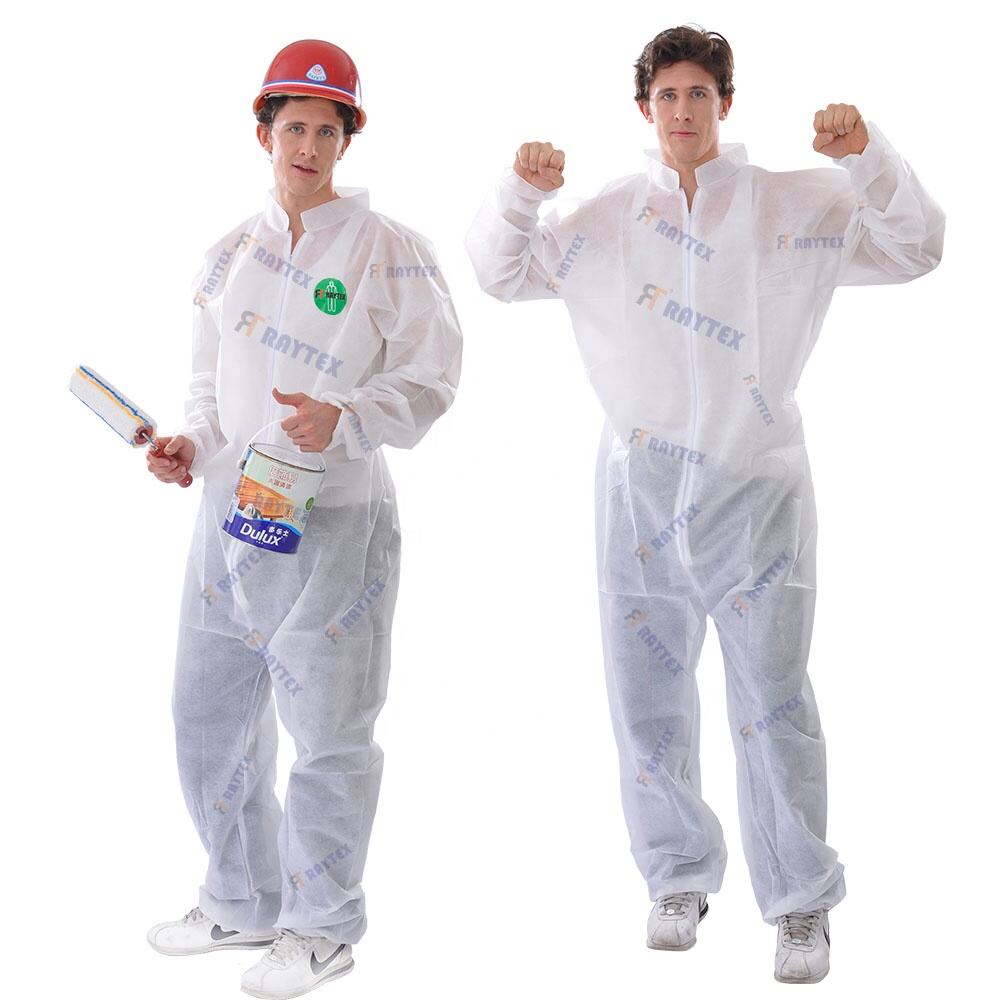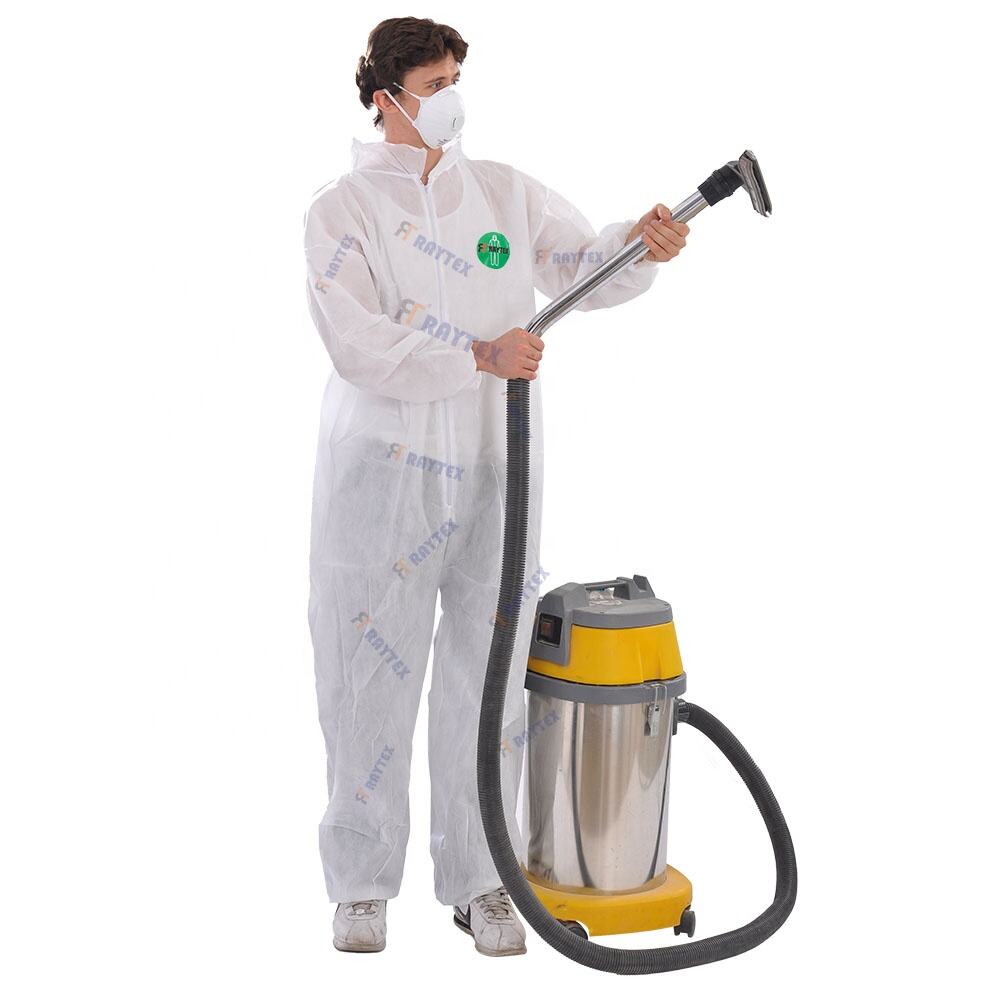Disposable nonwoven coveralls for construction sites are specialized protective garments designed to shield workers from a range of hazards encountered in construction environments, including dust, dirt, debris, chemicals, and biological contaminants. These coveralls provide a full-body barrier, protecting workers' clothing and skin while also preventing the transfer of contaminants from the work site to other areas. Constructed from lightweight, breathable nonwoven materials such as polypropylene, SMS (spunbond-meltblown-spunbond) composites, or spunlace fabrics, these coveralls offer a balance of durability, comfort, and protection. The nonwoven material is resistant to tearing and abrasion, withstanding contact with rough surfaces, tools, and debris commonly found on construction sites, while remaining lightweight enough to allow freedom of movement for tasks such as lifting, climbing, and operating machinery. Design features include a full-length cut with long sleeves, elastic cuffs, and an elastic or drawstring waist to ensure a secure fit and prevent contaminants from entering. Many coveralls feature a front zipper with a storm flap for easy donning and doffing, and a hood to protect the head and hair from dust and debris. Some models also include reinforced knees and elbows to enhance durability in high-stress areas, and pockets for storing small tools or personal items. The breathable nature of the nonwoven material helps to prevent overheating, which is crucial for workers wearing coveralls for extended periods in often warm construction environments. These coveralls are disposable, eliminating the need for laundering and reducing the risk of cross-contamination between work sites or tasks. They are particularly useful in construction scenarios such as concrete pouring, painting, insulation installation, or asbestos abatement, where workers may be exposed to substances that could stain or damage regular clothing, or where hygiene is a concern, such as in renovation projects in healthcare facilities or food processing plants. Compliance with safety standards is important, and these coveralls meet regulations such as EN 13034 (protective clothing against liquid chemicals) and ANSI/I


